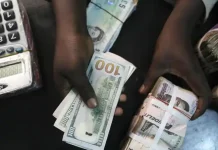AMIDST the sharp rise recorded in the fisheries sub-sector contribution to the second quarter, 2020 Q2’20 Gross Domestic Product, GDP of Nigeria, a maritime industry expert has expressed the, authenticity, and sustainability of the growth figures reported. Despite the massive decline in the nation’s GDP in Q2’20, the fishing subsector of the agriculture industry witnessed of growth of 5.68 per cent during the period.
The National Bureau of Statistics, NBS, had reported that the nation’s economy declined by -6.2 percent in Q2’20, on the backdrop of the impact of coronavirus, COVID-19 pandemic, with several sectors of the economy declining along the line.
But the NBS report shows that the fishing sub-sector at 5.8 percent growth, surged exponentially above the 1.09 percent it recorded the same period last year. It also shows a huge jump in growth rate against the first quarter of 2020, Q1’20, pace of 7.1 percent.
Over the six consecutive quarters of 2019 to 2020, the trend shows a W shape curve indicating sharp swings in fortune with the lowest performance of recorded in Q2’19.
On reasons for the sharp drop at the beginning of last year until the rise in the second quarter of this year, there are indications that it might not be unrelated to policing of the nation’s waters and inability to export abroad during the COVID-19 induced socio-economic lockdown.
But speaking with Vanguard Maritime Report, a ship captain and former Director Shipping Development at the Nigeria Maritime Administration and Safety Agency, NIMASA, Warredi Enisuoh, said the rise during the lockdown may not be unconnected to the inability of these ships to export their catch.
He said it could also be as a result of renewed efforts by the government towards such alternative sources of income. According to him, “I do not know where they got the figures from but a whole lot of reasons could be responsible for the rise. You know different countries put in place different measures during the lockdown.
Some did total lockdown and some partial; you know in the past a lot of the catches (fishes) move towards one direction; that may not be possible again; so they are looking for alternatives.” Enisuoh further stated: “In the West Africa region, we are not in full control of our fishery resources, and what I mean by we are not in full control is that a lot of foreign companies come to our waters to fish and quite a lot of them are internationals.
Being that they have nowhere again to sell their catch, they have resorted to selling here, nobody knows. So, only future statistics can tell us whether it is a sustainable occurrence or not. Are they really getting their facts correct; where are they getting their facts from? Unless we know how they get their facts that is the only way we can make an informed decision.
Are they getting it from ships coming to pay dues; are they getting from Customs; are they getting it from NIMASA, or are they getting it from NPA? Internationally the fishing laws are very simple to follow. You have to land every catch you get in the area where you caught them before export.
So these figures they are quoting are they from local industries or from international ships? If it is from the international ships then it calls to question because in quite a lot of countries because of the COVID-19 thing are setting up agricultural products.
Source: VON














